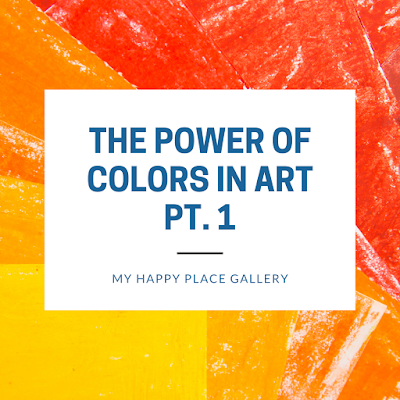The History of Photography, Pt. 4
Ever wondered how we got from the delicate film cameras our grandparents used to the convenient digital cameras we use today? The advancements from film cameras to HD all happened in less than a century. This blog is the final in our series about the history of photography. We’ll cover the developments from after World War I to the 21st century and go over how the camera evolved into what it is today.
By the 1940s, progress made in color
processing allowed photographers to expand their creative endeavors. The
vividness of color led them to focus on the elemental aspects of photography.
After World War I, many American photographers began to capture images aligned
with the abstract expressionist movement rather than documentary photography. A
few decades later, in the ‘60s, these techniques and ideas had traveled to
Asia. They used color to create vivid and abstract images that focused on
street life and modern social affairs.
Street photography, like that practiced in
China, is a specific branch of the documentary genre. This form of photography
drew many to it due to its spontaneous nature. Unlike social documentation,
street photography isn’t aiming to capture social issues but instead natural
scenes of everyday life. Notable subjects of the mid 20th century include urban
life in Europe, the civil rights movement, and underprivileged children.
Photographers worldwide took advantage of the light and portable cameras of
this time to capture these environments. Many other photographers used social
documentation to view and dissect life during the postwar period. In America,
they used 35-mm cameras to capture everyday activities in industrial areas.
These images complimented another prevalent theme of the period pop art’s
exploration of the modern-day consumer lifestyle.
Maintaining the trend of social documentation
emerged a grittier and often darker style of the genre in the 1970s and ‘80s.
Photographers such as Larry Clark and Nan Goldin recorded the alternative
culture in American that included addition, casual sex, and crossdressing. Some
photographers even used this style to capture in-depth, personal scenes that
included their own families. Goldin often used color to heighten the intensity
and bleakness of these images.
During and following the 1970s,
photojournalism became widely popular thanks to the rise of tv news. People
gained an interest in photobooks of momentous events or topical matters, which
led photographs to capture images to fill books. Photographers published photos
in magazines and picture books along with text describing the images.
Photojournalists documented several different scenes from indigenous groups,
impoverished communities, and street life.
Other genres like fashion and landscape
photography also flourished during this time. Many photographers utilized the
vividness of color to depict beautiful nature scenes and architecture. The
addition of their work into museums' collections entirely changed the job of
fashion photographers. Images of fashion and celebrities that graced the covers
and inner folds of magazines like Vogue and Harper’s Bazaar were seen as art
that deserved to display in galleries and museums.
By the 1980s and ‘90s, photography was finally
beginning to gain respect as an equal artform to other forms of traditional
art. Photo installations, performance art, and videos all expanded the range of
art forms and altered what people considered art. From mixed media to portrait
to montages, photography flourished during the end of the 20th century.
During the latter decades of the century, all
these changes developed during the transition from analog to digital cameras.
The advancement began during the late 1980s as the first digital cameras were
released for consumers to buy. By 1990, Adobe had introduced their program
Photoshop which allowed for the digital alterations of images. This, in turn,
revolutionized the very essence of photography.
The effects of this new digital age of
photography weren’t prevalent until the beginning of the new millennial. The
ease and quickness of editing and transferring these images made it so that all
photojournalists were using digital cameras. However, many people were troubled
by the manipulation, the surge of altered photos led to the development of
ethic codes. While journalists were careful with editing, other photographers
used it to create alternative and innovative styled images. Fashion and
celebrity photographers often had their pictures modified before they were
printed in magazines to minimize blemishes.
To date, the most compelling and altering
advancement of digital photography was the development of expansion and
improvement of photo taking and sharing. Commercial photography and
governmental use of photography also increased due to this new ease of taking
and uploading images. Most profoundly, the introduction of smartphones in the
middle of the 2000s alongside online apps allowed for images to be captured and
transferred within seconds.
Today, thanks to social media and the amazing
cameras in our smartphones, we too can effortlessly snap a picture of our
everyday lives and share them with the world. Cameras have come a long way
since their early developments centuries ago. Photography currently occupies
both the modern age of art and digital communication. While its identity has
changed so much over the years its importance as a method to tell visual
stories remains as essential as ever.



Comments
Post a Comment